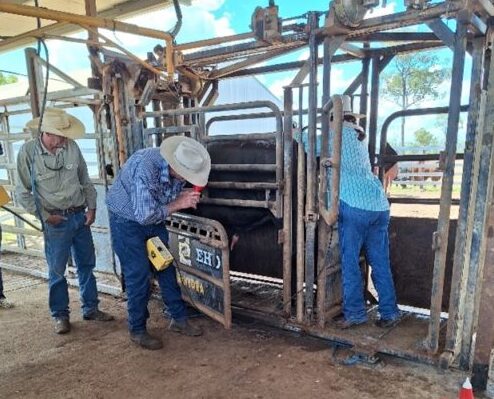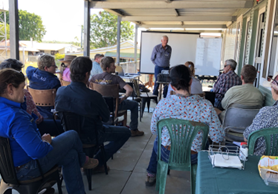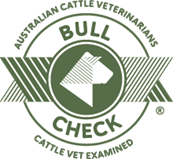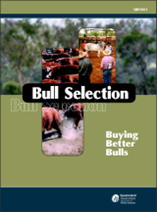Keeping sight of what makes you money — bull selection workshops with John Bertram
With spring bull sales in full swing, producers in the Mt Coolon and Dotswood districts took advantage of the information provided at two recent bull selection workshops held on local properties. The days run by the DAF beef extension team, featured keynote speaker John Bertram, who was an integral contributor to the Bull Power projects and Beef CRC.
Having John share his extensive knowledge on bull selection for commercial beef production was highly valued by those at the workshops.
Key messages
The days began with the question, “What drives profit for the commercial beef industry?” and the answer “Kilograms of beef produced x sale price/kg minus costs.”
John expanded the equation:
- Kilograms of beef produced = number of calves x growth rate x sale price.
- If your sale price is from a meatworks grids it is primarily a function of carcase weight and fat cover.
“Bulls provide 50% of the genetic contribution to profits. If a bull is kept in a herd for 6 years and is mated to 50 breeders/year with an 80% weaning rate, he influences 240 offspring directly in his lifetime. If his daughters are kept in the herd for 10 years, that significantly increases his impact.”
John’s take home message on selecting bulls was, “don’t lose sight of what makes you money.”
The days were interactive, with group discussion on what attendees looked for when selecting bulls and what they hoped to get out of the day. The morning was spent covering bull structure and the important considerations which enable bulls to sire maximum calves in minimum time and over multiple seasons:
- visible – leg, feet and joint abnormalities/issues, sheath depth
- not so visible – reproductive system and sperm characteristics.
Live Bull Breeding Soundness Evaluation
It was greatly appreciated that the hosts allowed a live demonstration of a bull breeding soundness evaluation (BBSE) down at the yards.
The BBSE guidelines have been developed by the Australian Cattle Veterinarians group to assess a bulls’ ability to serve cows and establish a pregnancy. Other topics discussed included:
- the positive correlation between scrotal size in yearling bulls and age of puberty of their daughters
- minimum and average scrotal size thresholds for various breeds at certain ages or weights.

John collecting semen during the bull breeding soundness evaluation
From the animal to the data
With the hours fast disappearing, the main topic after lunch attendees were interested in, was understanding estimated breeding values (EBVs). Of particular interest was how EBVs are generated and how they enable comparison of progeny across years and across climatic regions through linkages of relatives and common sires.

John demonstrated how difficult it would be for studs to submit inaccurate data to make particular animals appear more desirable, and the negative flow-on effects of this to many other animals within a group, which was a common concern raised. Many other considerations in selecting bulls to improve profit had to be left for another day, but attendees enjoyed the practical demonstration and the opportunity to have John impart his knowledge and answer questions.
We are very thankful to the producers who hosted the workshops.
This article was written by Roxanne Morgan and Lara Landsberg, Department of Agriculture and Fisheries (DAF), Mackay.
Additional resources
‘Bull Selection: An aid for beef producers on Buying Better Bulls’ – a book compiled by John Bertram and colleagues as a product of DPI’s “Commercial Application of Beef Genetic Technologies” project.
 BULLCHECK™ Scheme – to find a BULLCHECK™ accredited vet near you.
BULLCHECK™ Scheme – to find a BULLCHECK™ accredited vet near you.
